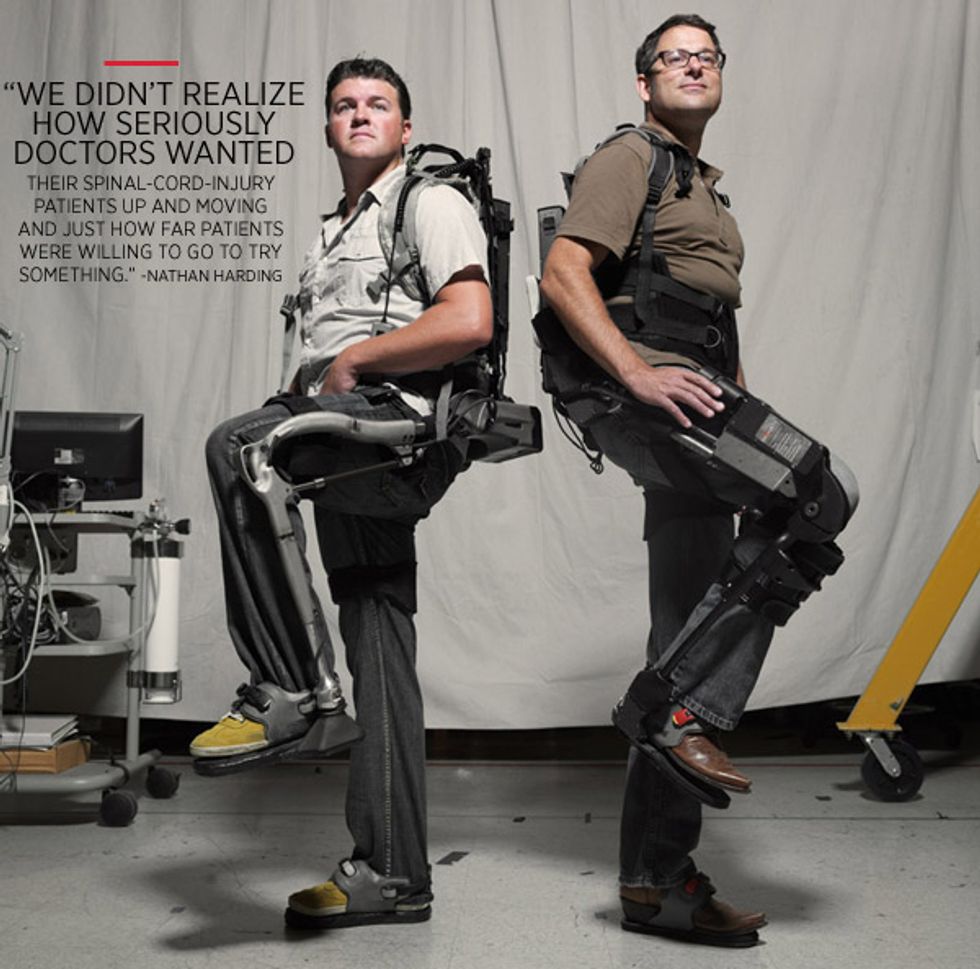Russ Angold, 34, and Nathan Harding, 43
eLEGS inventors
Photographed by John Lee at Berkeley Bionics
Russ Angold (left) and Nathan Harding take tinkering to another level. In 2004, they worked on the first untethered, computer-powered exoskeleton at UC Berkeley’s Robotics and Human Engineering Laboratory before founding Berkeley Bionics in 2005. An exoskeleton is a machine that props up and protects the body, thus letting a paraplegic walk upright for the first time in years—or perhaps ever. “We didn’t realize how seriously doctors wanted their spinal-cord-injury patients up and moving and just how far patients were willing to go to try something,” says Harding. “It became clear that if we could make a simple, elegant tool, people would use it.” So Berkeley Bionics came up with eLEGS, which uses the arms’ forward gestures to initiate leg movement. “You’re basically steering your legs with your arms,” Angold says. Although still in medical trials, eLEGS has already been placed in CNN’s Top 10 Innovations of 2010 and featured in Time and Wired magazines. “It’s exciting to be breaking this barrier, but it also gives us a heavy feeling of responsibility,” Harding says. “When you see how many people are counting on you, it’s hard not to feel a little nervous.”






















